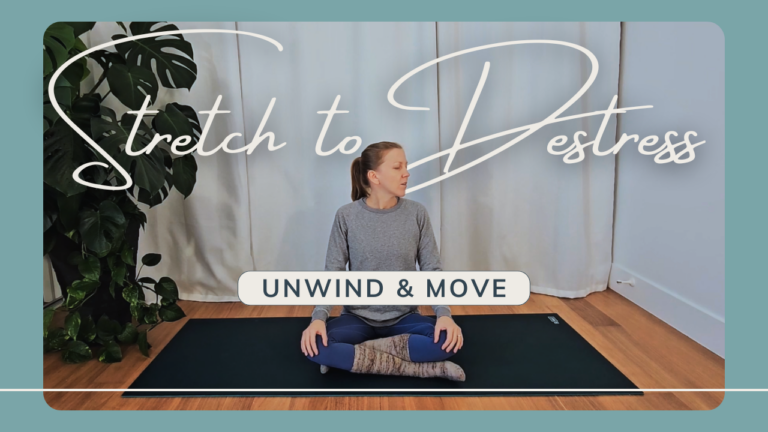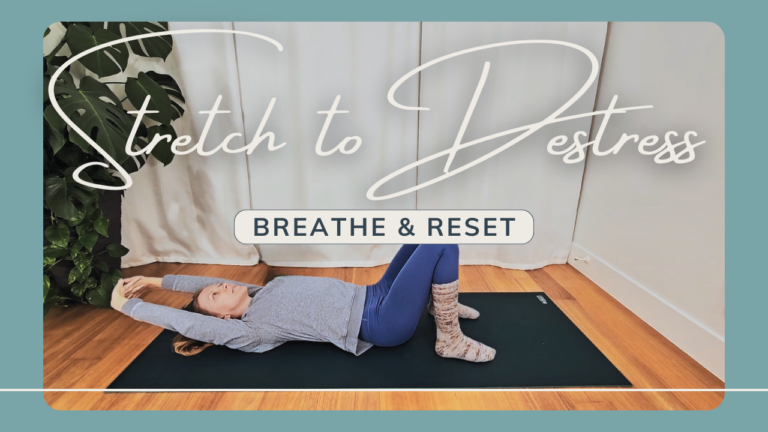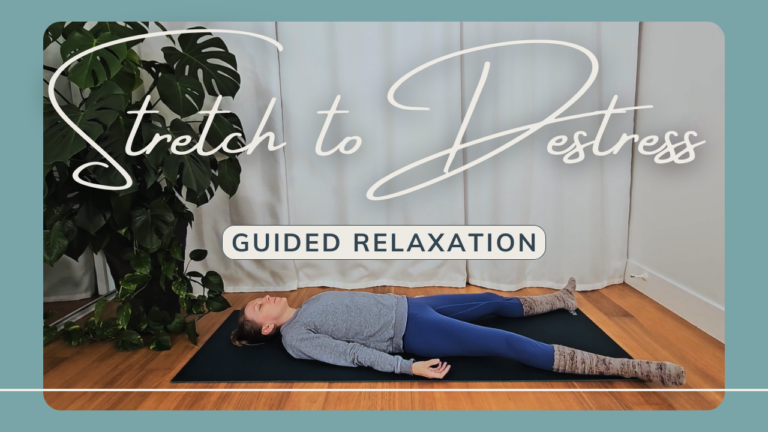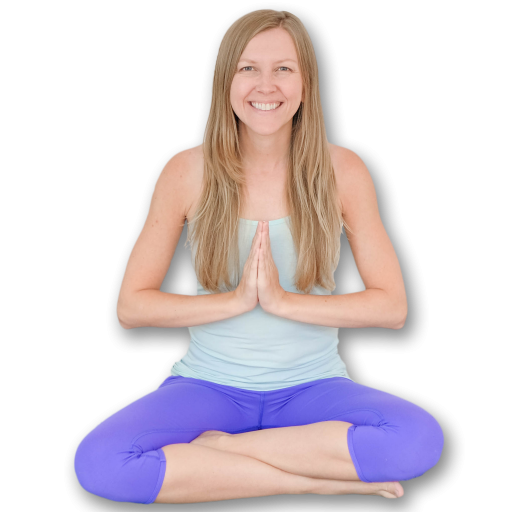If the backs of your legs are in need of some release, then you’ll want to check out my 5 different variations of hamstring stretches! Whether you’d prefer to stretch while standing, sitting on a chair, sitting on the floor, or lying down, there’s an option that will perfectly suit you.
Consider adding hamstring stretches to your routine if you notice any of these signs:
- Tightness or Discomfort: If you frequently experience tightness or discomfort in the back of your legs, especially when bending forward or reaching down, it could be a sign that your hamstrings are tight and could benefit from stretching.
- Limited Range of Motion: Difficulty extending your legs fully or reaching your toes may suggest limited flexibility in your hamstrings. Regular stretching can gradually improve your range of motion.
- Back Pain: Tight hamstrings can contribute to lower back pain. If you often experience discomfort in your lower back, regularly stretching your hamstrings may help relieve some of the tension.
- Posture Issues: Tight hamstrings can affect the alignment of your pelvis, leading to poor posture. If you find yourself slouching or experiencing discomfort while sitting up straight for extended periods, hamstring stretches are a good starting point for improving your posture.
- Morning Stiffness: Feeling stiff in the back of your legs when you wake up in the morning might be a sign that your hamstrings could benefit from some attention.
5 Variations of Hamstring Stretches
With all the options I show, you’ll notice I always stretch one leg at a time. I prefer this because there are often different levels of tightness between the legs. By concentrating on one at a time, you ensure the most effective stretch for each.

Standing Forward Fold with Foot on Chair:
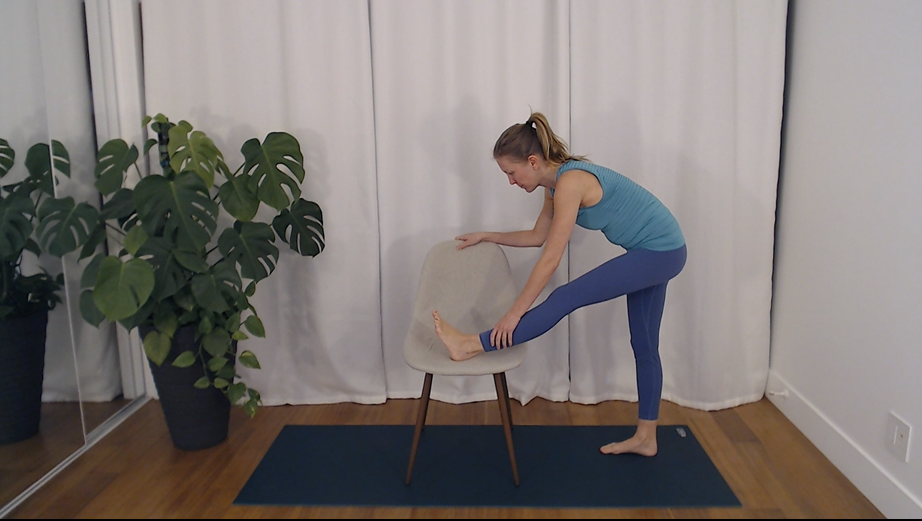
Start by standing with one heel resting on the seat of a chair with your leg extended. Keep a straight spine and gently lean forward by hinging at the hips. Once you start to feel the stretch in the back of your hamstring, you can allow your spine to round and reach lower down your leg.
Chair Forward Fold with Heel on the Floor:
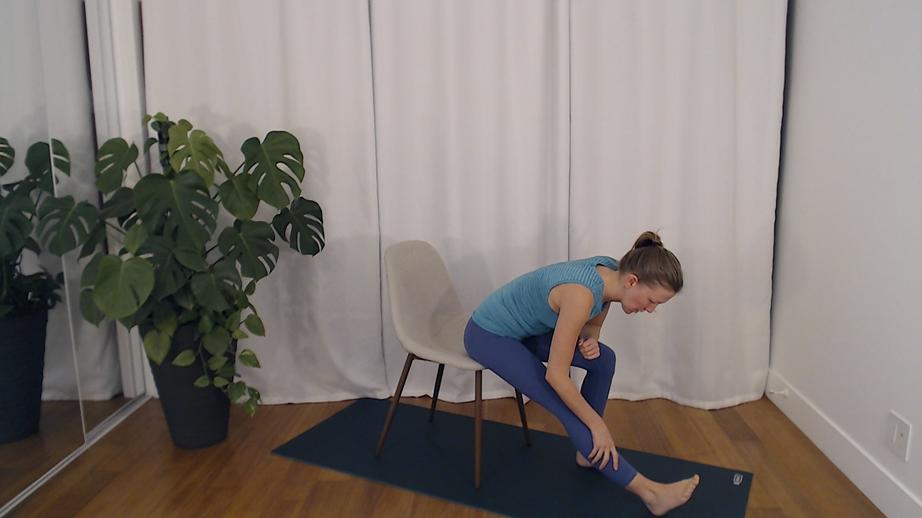
Sit towards the front edge of a chair and extend one leg with your heel resting on the floor. Hinge at the hips and lean forward, maintaining a straight back. Once you start to feel the stretch you can allow your spine to round and reach lower down your leg.
Chair Forward Fold with Foot Elevated:
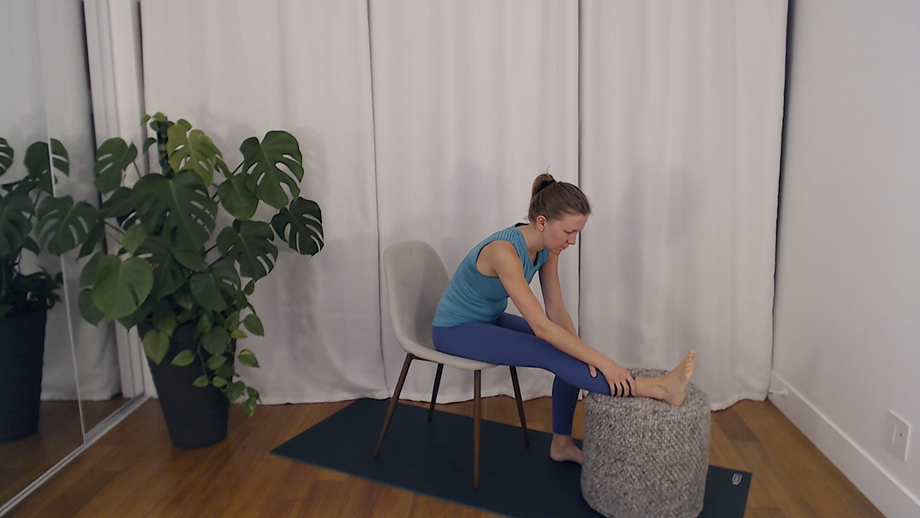
Follow the steps for the previous stretch, but this time elevate your foot on a stool. This modification allows you to feel the stretch without having to lean as far forward. As a result, some may find this makes it more accessible while others may feel it allows for a deeper stretch. Try them both and see which you prefer!
Seated Forward Fold on the Floor:
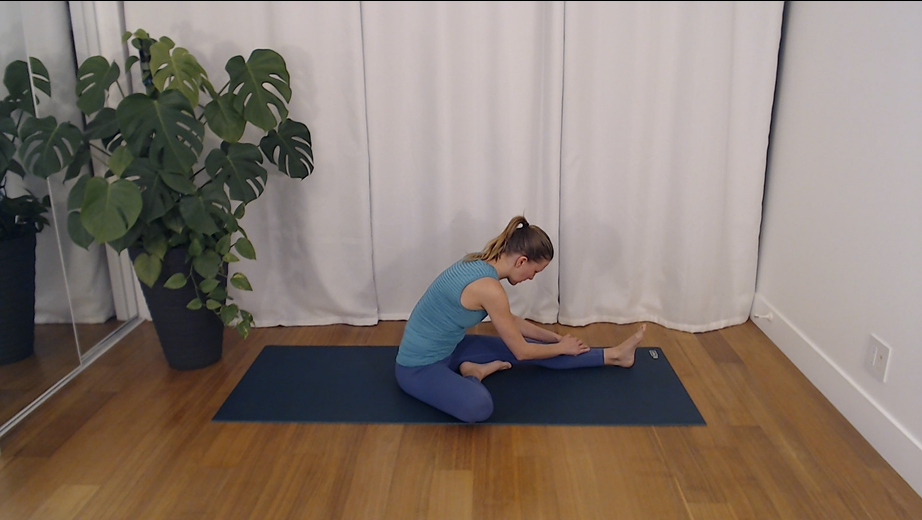
Sit on the floor with one leg extended straight and the other leg bent, foot against the inner thigh. Hinge at the hips, and lean forward maintaining a straight back. Once you start to feel the stretch you can allow your spine to round and reach lower down your leg.
Tip: If you find it difficult to sit up straight in this position, you can elevate your hips by sitting on a pillow or two. To protect your knee, you can also place a rolled towel or a small pillow underneath it.
Reclined Stretch with Strap:

Lie on your back and loop a strap around the ball of your foot. Extend that leg upward and gently pull towards you. In this position, your foot will be pulled into a flexed position which means you’ll get a great calf stretch as well.
Tip: There are many substitutes to a yoga strap that you can use, for example, a resistance band (one that’s not too stretchy), belt, scarf, or towel.
Stretch Your Calves While You’re At It!
Similar to the last stretch where a strap is used, you can also incorporate a strap in all the other variations to target your calf along with your hamstring. To do so, before you start the forward fold, place the strap across the ball of your foot and gently pull back so your foot maintains a flexed position. If you have more flexibility, an alternative option is to use your hand to grab your foot and pull it into a flexed position.
Slow and Gentle
Experiencing some discomfort when stretching is normal, however, you should never feel sharp pain. By moving slowly and gently it allows you to safely find the point where you are getting a good stretch but are not overdoing it. If you ever aren’t sure, it’s best to err on the side of caution. Overstretching can cause injury which often takes weeks or more to recover from.
Feel free to experiment with these variations and discover which one works best for you! The back of the leg is an area that is prone to tightness, and stretching it can ease issues like lower back pain, poor posture, and overall leg discomfort. I know it isn’t always easy getting started, but taking the time to stretch is always well worth the effort!

